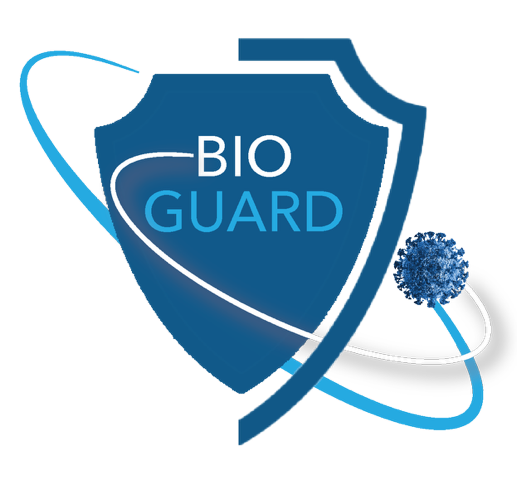- Home
- Hand antiseptics
- GERMADINE
GERMADINE
GERMADINE
Antiseptic solution
Hand washing with chlorhexidine solutions have been shown to reduce skin flora as a surgical scrub, chlorhexidine not only reduced skin flora, but it also maintained its antimicrobial activity for up to six hours.
- Hand hygiene is the single most effective infection prevention measure.
- Chlorhexidine solutions are often used for hand hygiene in the hospital setting.
- Alcohol preparations may have the quickest kill rate against bacteria, but chlorhexidine has a much longer duration of action.
- Products with Chlorhexidine in combination with alcohol have been shown to be more effective than
alcohol alone.
GERMADINE

2% w/v Chlorhexidine Gluconate
70% v/v Isopropyl Alcohol
- INSTRUTIONS OF USE
- AREAS OF APPLICATION
- FEATURES & BENEFTS
- COMPOSITION
- PRECAUTIONS OF USE
- PACKING TYPES
- For hygienic hand rub :
At least 3 ml of GERMADINE should be rubbed onto the dry hands within 30 seconds without rinsing. - For surgical hand scrub:
GERMADINE should be distributed onto dry hands and forearms in order to entirely cover them. - As many portions as necessary to keep them wet for at least 1.5 minutes should be rubbed in without rinsing (in one direction or circle).
- GERMADINE is ready to use.
GERMADINE is a hand antiseptic solution intended for:
- Hospitals
- Clinics
- Laboratories
- Suitable for hand hygiene in any environment where infection control is critical.
GERMADINE is a hand antiseptic solution:
- An alcohol-based solution and use for hand antisepsis.
- Has an effect on Different strains of bacteria (gm+ve + gm-ve).
- Inactivates Bacteria, Fungi, Spores and Viruses.
- Does not contain additives that can irritate the skin.
- Contains skin emollients to protect and care for the skin.
- Suitable for surgical hand rub.
- Suitable perfume.
- Excellent skin tolerability even with long-term use
- Comprehensive range of action.
- Alcohols are quick drying and have rapid activity/action when applied to the skin but alone do not have residual (persistent) effect on the skin.
- This is significantly improved when it is mixed with other agents such as chlorhexidine gluconate.
- Chlorhexidine is a broad-spectrum antimicrobial agent that kills a wide range of gram positive and gram-negative bacteria
- Active ingredients Each 1OOgms contains:
- 2-propanol 70 gms
- Chlorhexidine gluconate 2gms
- Other ingredients :
- Glycerol, perfume, Purified water.
- External Use Only: Do not ingest or apply to mucous membranes, eyes, or open wounds
- Flammable: Contains 70% 2-propanol (alcohol); keep away from heat sources and open flames.
- Avoid Contact with Eyes: In case of eye contact, rinse immediately with plenty of water and seek medical advice if irritation persists.
- Do Not Rinse Off: The solution is ready to use and should not be rinsed after application.
- Keep Out of Reach of Children.
- Storage: Store in a cool, dry place, away from direct sunlight.
-
1 L : 10 bottels , 1000 ml
جيرمادين محلول مطهر
🔹 الكلورهيكسيدين أثبت فعاليته في تقليل بكتيريا الجلد، ويُستخدم على نطاق واسع في المطهرات الجراحية. يتميز بأنه لا يكتفي بخفض الحمل الميكروبي فورًا، بل يواصل نشاطه المضاد للميكروبات لمدة قد تصل إلى ست ساعات.
🔹 نظافة اليدين تُعدّ الإجراء الأكثر فعالية للوقاية من العدوى داخل المستشفيات. ولهذا تُستخدم محاليل الكلورهيكسيدين كثيرًا في برامج مكافحة العدوى.
🔹 بالمقابل، تمتاز المستحضرات الكحولية بسرعة القضاء على البكتيريا، لكنها لا توفر حماية طويلة المدى بعد التبخر.
🔹 وعند الجمع بين الكلورهيكسيدين والكحول، نحصل على أفضلية مزدوجة:
– الكحول يحقق قتلًا سريعًا وفعالًا للجراثيم.
– الكلورهيكسيدين يضمن استمرار الأثر الوقائي لفترة أطول.
✅ لذلك تُعتبر المنتجات المحتوية على الكحول مع الكلورهيكسيدين أكثر فعالية من الكحول وحده في الحفاظ على نظافة اليدين ومنع العدوى.
| المطهر | سرعة القضاء على البكتيريا | مدة التأثير | المميزات الأساسية | الاستخدام المثالي |
| الكحول (إيثانول/أيزوبروبانول) | سريعة جدًا (ثوانٍ) | قصير جدًا (حتى يجف السطح) | قتل فوري للبكتيريا والفيروسات | التعقيم السريع لليدين والأسطح |
| الكلورهيكسيدين | فعّال لكن أبطأ من الكحول | طويلة (حتى 6 ساعات) | تأثير ممتد، يثبط نمو البكتيريا | نظافة اليدين الجراحية، الوقاية المستمرة |
| المزيج (كحول + كلورهيكسيدين) | سريعة جدًا | طويلة (يجمع بين الميزتين) | قتل فوري + حماية ممتدة | الأفضل في المستشفيات والتحضير الجراحي |
